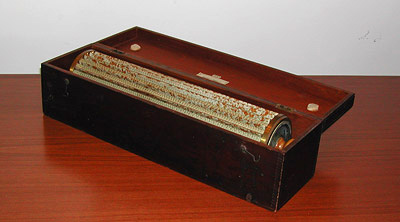 |
|
|
|

|

|
Thacher's monster slide rule |
|
|
|
|
This was his response to the usual problem of slide rule design: you want a long scale to achieve more precise readings, but you want it to fit in a manageably small instrument. In this case the “small instrument” is 57 cm from knob to knob, but then, it packs a scale over 9 meters long! |
|
|
|
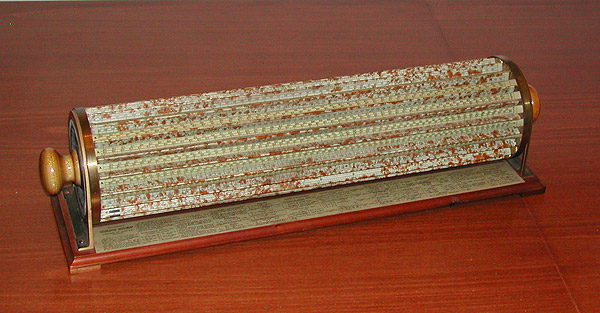
|
|
|
|
Thacher took a pair of 30-foot logarithmic scales, chopped each into 20 short segments, and placed them side by side around a cylindrical structure; the movement of the slide allows extension, as in a normal slide rule, and rotation relative to the fixed segments. These last, glued to the triangular bars of the “cage” (the stator), also rotate, allowing access to any portion of the scale. The outcome is a desktop instrument capable of calculations accurate to four and sometimes even five significant digits. |
|
|
|
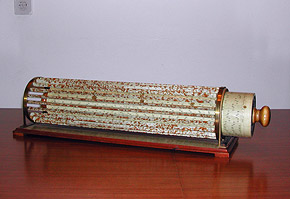
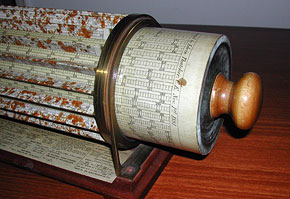 Click a photo to enlarge |
|
|
|
The Thacher was produced mainly by Keuffel
and Esser in New York. Mine, which was made by them in the first quarter of
the 20th century, shows the signs of its age -- the stator’s paper
scales have tarnished with brown spots, probably from corrosion in
the metal bars they’re glued onto. Surprisingly, this defect gives
the instrument a lovely antique look -- the brown of the corrosion
complements the varnished wood of the base quite aesthetically. Operation is actually quite simple, though lacking practice it takes me a moment to navigate the manifold scales. To multiply 225 by 3.505, for example, you’d align the slide’s “one” -- marked for visibility by a black stripe -- with the 225 on the stator (left photo below), then turn the instrument until you locate the 3505 on the slide; the result, 788.6, can be read on the stator next to this 3505 (right photo). Basically this is just what you’d do on a simple straight slide rule. |
|
|
|
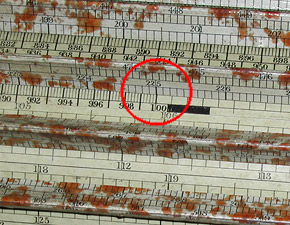
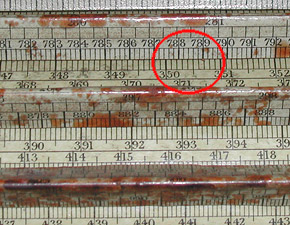 Click a photo to enlarge |
|
|
|
Exhibit provenance: Purchased from the estate of the late Richard Mossip, an accomplished engineer and collector of surveying instruments from the US.
More info: |
|
|
|
|
|
|
|
Home | HOC | Fractals | Miscellany | About | Contact Copyright © 2007 N. Zeldes. All rights reserved. |
|
